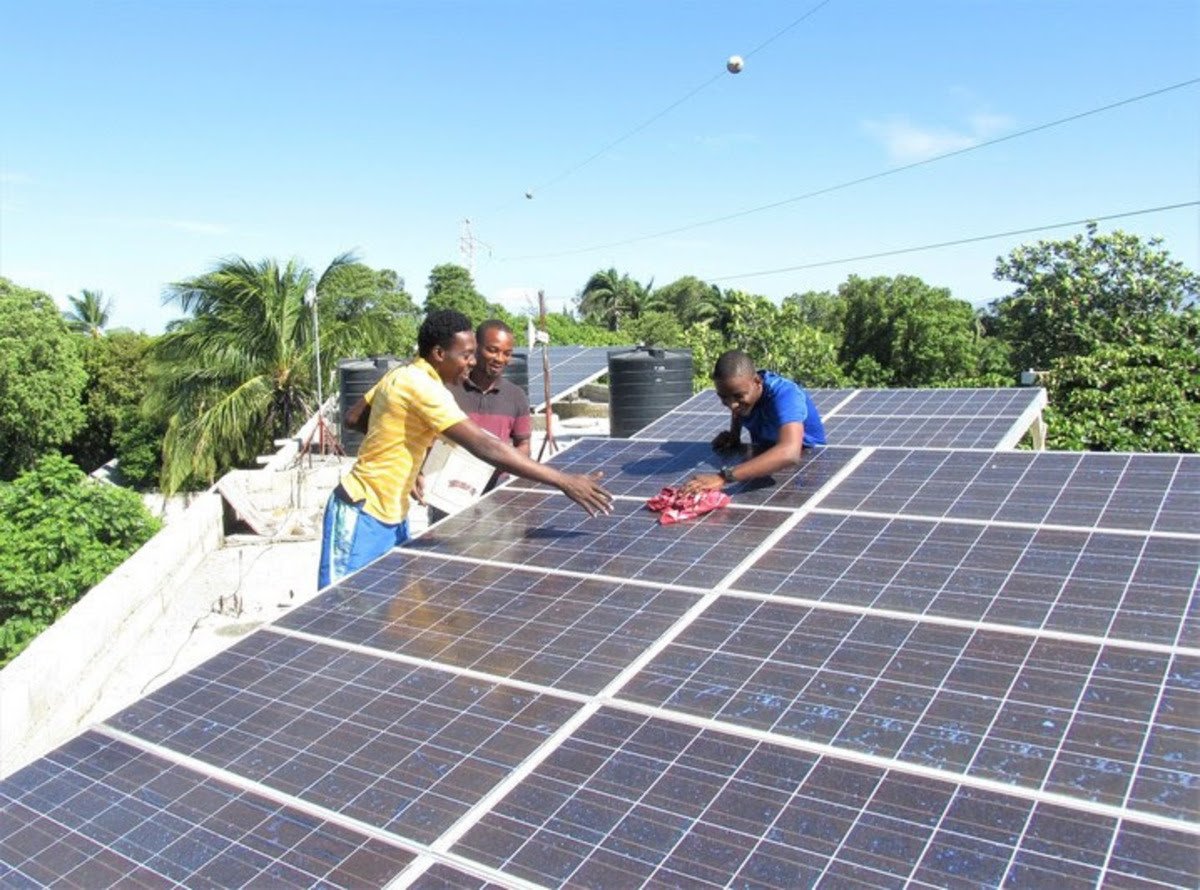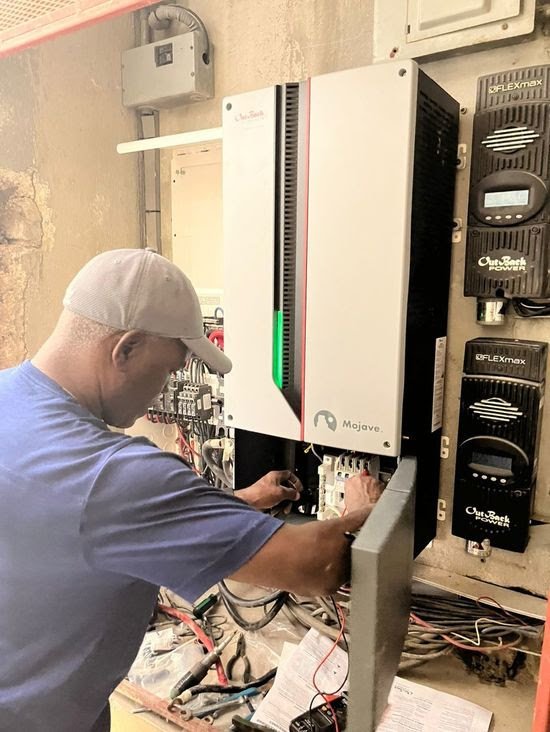The recent fuel shortage and supply chain disruptions in Haiti have made Louverture Cleary School's solar capabilities more vital.
The earth has circled the sun 18 times since the first solar arrays were installed on the flagship Louverture Cleary School campus.
Since then, every building has been equipped with its own system of panels, inverter, charger, and batteries. The result—over 54 kilowatts (kW) worth of panels and 12 dozen batteries scattered across the rooftops and tucked in the niches of the campus.
This massive undertaking of talent and resources freed LCS from unreliable utility power and drastically reduced dependence on back-up generators.
Over the past 18 years, the batteries have charged during the day and discharged their stored energy at night more than 6,500 times. The state-of-the-art storage available back then was gel lead-acid batteries. These were heavy, expensive, and at best lasted 1,000 cycles under normal operating conditions. But the demands for power on a campus with over 400 people are high, and the prohibitive cost of assembling adequately large battery banks never allowed for “normal” operating scenarios. As a result, most of the batteries that have cycled through LCS over the years have been exhausted by their 700th charge. It has been a constant struggle to keep the battery banks at optimum output.
Thankfully, in that span of 18 years, solar technology has evolved at the speed of light.
New systems are available that greatly increase efficiency and allow LCS to obtain optimum solar performance. The Radia Science Lab was the first building on campus to use paired inverters capable of delivering 220 volts, compared to the old inverters that could only produce 110 volts. And this fall, the east section of campus received the newest inverter—a hybrid model that combines several components into one powerful unit.
A technician from Energy Central, a local Haitian company co-founded by an LCS alumnus, installing the new hybrid inverter for the Agora (library) building.
This state-of-the-art model will also be used to power future campuses in the Louverture Cleary School Network.
The new inverters can also be paired with the latest battery technology. Lithium iron phosphate (LiFePO4) batteries provide 10 times the life cycles of lead-acid batteries and can be regularly discharged to 90 percent, instead of lead-acid batteries' optimal 20 percent discharge. Furthermore, LiFePO4 batteries can deliver higher amounts of current over longer periods of time, are less expensive to operate, and require less maintenance than lead-acid batteries.
Solar panels, too, have increased in efficiency and decreased in price. Almost two decades ago, solar panels were selling for $7 per watt; today, costs are down to $0.42 per watt. The current campus is outfitted with panels that average about 350 watts; the new schools in the LCS Network will have panels with double that capacity. With the newest technologies requiring fewer individual panels, components, and batteries, the new schools will also reap the benefits of centralized power production, storage, and distribution systems.
LCS’s solar capabilities will continue to evolve and new technology will continue to be implemented. Lead-acid batteries and outdated components will continue to be replaced with lithium-iron batteries and hybrid inverters. Planning is underway to install a dedicated array providing 220 volt power to water and septic pumps on the LCS campus.
As the school's commitment to environmental stewardship continues with each cycle of the sun, more improvements to the solar energy system will be made, and for years and years to come, LCS — and all campuses of the LCS Network — will be shining points of (solar) light.
Do You or Someone You Know Want to Invest in Solar Power at Louverture Cleary School? The school needs $100,000 in critical solar upgrades over the next 12 months and could use your help! Email [email protected] to learn more.
“Keep In Touch” to receive periodic updates on our students, activities at Louverture Cleary School, and progress on the LCS Network. Together, we can build a bright and enduring future for Haiti.
Go to Community Updates Page


